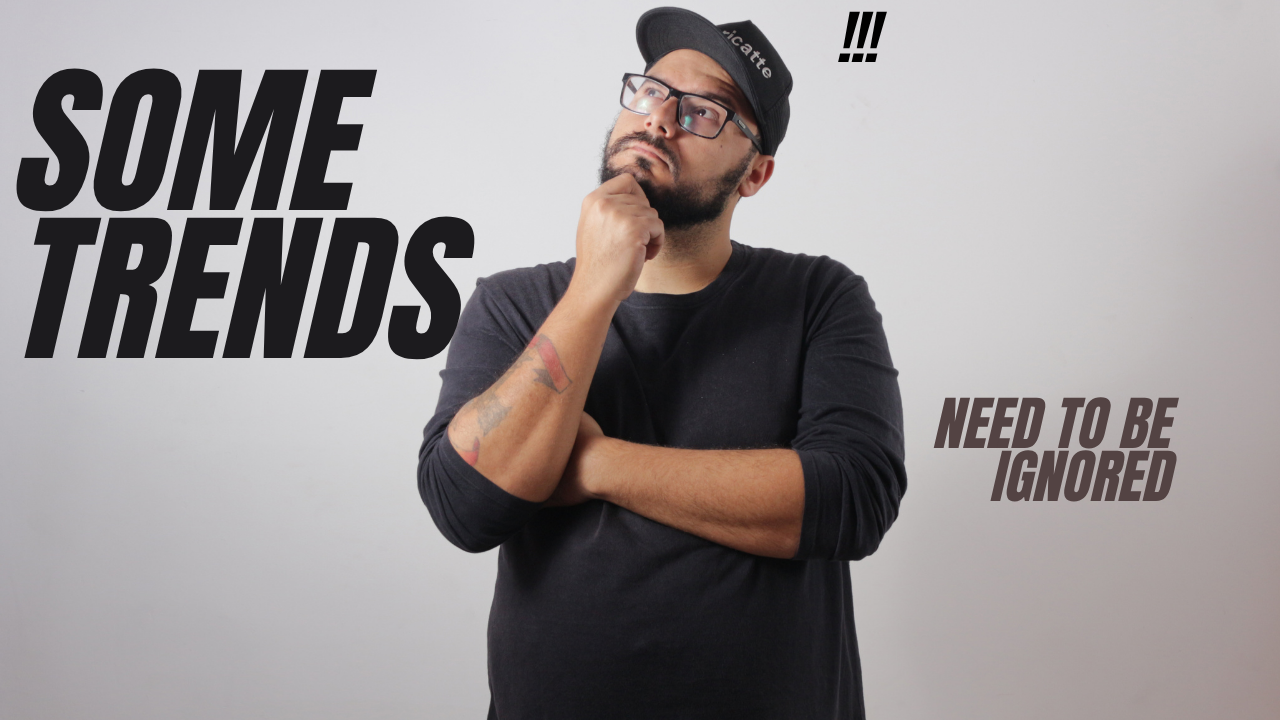Top 10 Digital Marketing Trends in 2025 That You Can't Ignore
By Admin

Stay ahead with the top 10 digital marketing trends in 2025. Learn how AI, personalization, voice search, and more are transforming the industry.
Introduction
In the ever-evolving landscape of marketing, staying ahead of the curve is not just a competitive advantage—it's a necessity. If you're a digital marketer, business owner, or aspiring entrepreneur, understanding the latest digital marketing trends can help you create smarter strategies and build deeper connections with your audience. In this article,
we will explore 10 powerful digital marketing trends dominating 2025 and how you can implement them with real-life examples, tools, and strategies. After reading, you'll know exactly where to focus your time and energy to achieve maximum impact in your marketing journey.
1. AI-Powered Content Creation
AI is transforming content creation—helping you save time and boost performance.It offers personalized messaging tailored to your audience’s needs. By using tools like Jasper or ChatGPT, you can draft blogs and social posts in minutes. This frees you to focus on creativity and engagement which helps you in marketing.
Why It Matters:
-
Cuts time on content writing & planning.
-
Enhances SEO through auto-suggestions and optimization.
-
Personalizes content using behavior data.
Tools to Explore:
-
Jasper.ai – Content templates and blog generators.
-
Copy.ai – Email copy, product descriptions.
-
ChatGPT – SEO blogs, captions, topic ideas.
-
Surfer SEO – Optimizes blogs in real-time using keyword analysis.
How to Use:
-
Generate first drafts of emails, blogs, ads.
-
Automate content repurposing (e.g., blog ➝ social caption).
-
Personalize CTAs based on audience behavior.
2. Voice Search Optimization
Over 40% of people now use voice search daily—especially on mobile.With smart speakers and voice tools, more people speak to search engines.Using conversational, question-based phrases helps your content rank better.Add Q&A sections to your posts for voice searches.
This increases visibility for users relying on spoken queries.
Key Adjustments:
-
Use conversational phrases (e.g., "Where can I buy organic coffee?")
-
Structure content into FAQs, bullet points, and concise answers.
-
Implement local SEO with “near me” and voice-intent keywords.
Tools:
-
AnswerThePublic – Discover voice-style queries.
-
Google Search Console – Track voice-related impressions.
3. Hyper-Personalization with Data
Courtesy of advanced analytics, marketing is now deeply personal.Generic content doesn’t work anymore—hyper personalization drives 80% more engagement.Dynamic emails and real-time content keep users engaged and connected.
Segment audiences based on behavior, demographics, or intent to boost conversions.Tailored experiences lead to stronger relationships and loyalty.
Strategies:
-
Dynamic Emails: Use customer name, behavior-triggered offers.
-
Product Recommendations: Based on browsing history.
-
Segmented Campaigns: Age, location, preferences.
Tools:
(HubSpot, Mailchimp, MoEngage)
4. Video Marketing Still Dominates
Short videos are ruling attention spans on Reels, Shorts, and TikTok.They boost engagement because viewers often prefer quick, visual content.Create tutorials, mini product demos, or social trends in concise formats.
Add subtitles and interactive CTAs to increase conversionVideos now account for 82% of internet traffic. In 2025, short-form and live content are booming.
Key Video Types:
-
Reels, Shorts, TikTok (under 60 sec)
-
Webinars for B2B lead generation
-
Product demos and behind-the-scenes content
Tips:
-
Add captions (85% people watch without sound).
-
Post teasers on social and full versions on YouTube.
Tools: Canva Video, InShot, CapCut, VEED.io
5. Interactive Content Boosts Engagement
Today’s users love interaction, not just passive reading.Users crave more than passive reading—they want to interact.Use polls, quizzes, and infographics to make your content fun and engaging.
Interactive pieces also gather valuable data about user preferences.They keep people on your site longer and prompt social sharing.
Types of Interactive Content:
-
Quizzes: “What kind of entrepreneur are you?”
-
Polls on Instagram or Twitter
-
Calculators: ROI calculator, budget estimator
-
Interactive Infographics
Benefits:
-
Boosts time on site
-
Improves conversion rate
-
More shares and backlinks
6. Sustainability-Focused Branding
Eco-conscious shoppers now expect brands to care about the planet.Show real sustainability initiatives, like recyclable packaging or reduced emissions.Share progress in your blog, email, or social channels.
This builds trust and connects deeply with value-driven audiences.Consumers now choose brands aligned with environmental and social values.
Strategies:
-
Showcase eco-friendly practices on website & social media.
-
Use sustainable packaging and share behind-the-scenes.
-
Partner with green influencers.
7. Social Commerce Expansion
Online shopping is becoming seamless—right inside social platforms.Instagram Shops, Facebook Marketplace, and TikTok Shop simplify purchasing.Use shoppable posts, product tags, and live demos to increase sales.This eliminates friction by letting customers buy where they scroll.
Best Platforms:
-
Instagram Shops – Add product tags to posts.
-
Facebook Marketplace – Free visibility.
-
TikTok Shop – Great for impulse buys.
Tips:
-
Use live shopping to demo products in real-time.
-
Respond to comments as customer queries.
-
Add Shop Now CTA in every post.
Tools:
-
Shopify + Facebook Integration
-
WooCommerce + Instagram Shop
8. Micro-Influencer Marketing
Influencers with 5K–50K followers have more engaged audiences than big stars.Their authenticity drives stronger conversions and trust.Partner with niche influencers who match your audience and budget.
Offer reviews, affiliate links, or collaborative campaigns to maximize impact.
Why Micro Works:
-
Higher trust and niche loyalty
-
Affordable for small businesses
-
More authentic engagement
How to Collaborate:
-
Give discount codes or affiliate links
-
Offer product in exchange for review
-
Use UGC (User Generated Content)
Tools: Upfluence, Collabstr, Aspire.io
9. Zero-Click Searches & Featured Snippets
Many queries get answers directly in search results without clicking through.
Use schema markup and FAQs to secure featured snippets on Google.Answer common questions in 100–300 words, formatted clearly. Ranking in snippets builds credibility and boosts visibility.
What to Do:
-
Use schema markup to help Google understand content.
-
Write concise answers in under 50 words.
-
Use headings like “How to…” or “What is…”
Tools:
-
Ahrefs – Find snippet-worthy eywords.
-
SEMRush – Analyze featured snippet competitors.
10. Privacy-Centric Marketing
Privacy concerns are reshaping how brands collect and use data.Shift from third-party cookies to first-party data like email sign-ups.
So,be transparent about data handling with clear consent forms and policies.
Brands that prioritize privacy build lasting trust with users.With cookie bans and GDPR updates, ethical data handling is crucial.
Actions to Take:
-
Use first-party data (e.g., email sign-ups, purchase history)
-
Implement transparent privacy notices
-
Allow users to control cookies
Tools:
-
OneTrust – Consent management
-
Google Consent Mode
Digital Marketing Trends to Ignore in 2025 (And Why)
Digital marketing in 2025 is evolving fast, but not all trends are worth your time—or your budget. Many once-popular tactics are now outdated, misleading, or simply ineffective. As a marketer or business owner, it’s time to stop following every flashy idea and start focusing on what actually drives results. Here are 5 overrated digital marketing trends in 2025 that are better left behind—plus what to do instead.
1. Vanity Metrics Over Valuable Data
Vanity metrics like likes, shares, and follower counts may look impressive, but they rarely tell the full story. These numbers don’t guarantee leads, conversions, or customer retention. In 2025, successful marketers focus on actionable data such as conversion rates, average session duration, customer lifetime value (CLV), and bounce rates.
Instead of chasing likes, dive into tools like Google Analytics 4 (GA4),Facebook Pixel, or HubSpot to track real performance metrics. To go even deeper, tools like Hotjar and Crazy Egg offer heatmaps and session recordings so you can see exactly how users interact with your site—giving you data you can actually act on.
2. Posting on Every Platform
It may seem wise to “be everywhere,” but trying to manage content across six or seven platforms often leads to burnout and inconsistent messaging. Worse, it dilutes your brand and confuses your audience.
In 2025, a smarter approach is to focus on two primary platforms that align with your goals and audience. For instance,Instagram and Facebook work well for lifestyle and product-based brands, while LinkedIn and X (Twitter) are ideal for B2B professionals. If you’re a creator or educator, TikTok and YouTube Shorts are better bets. Tools like Buffer or Publer can help automate scheduling, so you stay active without spreading yourself thin.
3.Obsessing Over Daily Posting
The idea that “posting every day equals growth” is outdated. Social algorithms now prioritize relevance, quality, and engagement over sheer quantity. Bombarding your audience with low-effort posts can hurt more than help.
Instead, aim to post 3–4 times per week with well-thought-out content. Use a content calendar to plan ahead and ensure each post offers value. Whether it’s an educational carousel, an infographic, or a well-written reel caption, quality trumps frequency. Include strong CTAs to drive action and build community over time.
4. Over-Reliance on Hashtags
Once a powerful discovery tool, hashtags no longer carry the weight they used to—especially on platforms like Instagram and TikTok. Algorithms now give more importance to content relevance, watch time and keyword optimization.
Rather than stuffing 20 generic hashtags into every post, focus on SEO-friendly captions with natural keyword usage. Use only 2–5 niche-specific hashtags that truly reflect your topic, such as #ethicalmarketing or #halalfreelancer Most importantly, craft content that resonates emotionally and tells a story your audience relates to.
5. Copying Viral Trends Without Strategy
Jumping on every viral trend might earn temporary likes, but it doesn’t build trust or convert followers into customers. Viral trends are fleeting, and without a clear strategy, they offer little long-term value.
In 2025, focus on building a unique content style** and using trends only when they align with your goals. Ask: What challenges is my audience facing? What content do they share most? What tone resonates best—educational, emotional, or funny? Customize viral formats to your niche. For example, turn a trending meme into a quick digital marketing tip or industry insight that adds real value.
Conclusion
As we move deeper into 2025, the digital marketing landscape continues to evolve at a rapid pace. Trends like AI-driven content, voice search optimization, hyper-personalization, and privacy-centric strategies are no longer optional — they’re essential if you want to remain competitive.
Whether you're a solo female entrepreneur starting your journey, a small business owner trying to scale without breaking the bank, or a student preparing for a future in marketing, the key takeaway is this:
Adapt early. Test often. Learn continuously.Each of the trends discussed here offers unique growth opportunities. The tools are available, the platforms are evolving, and the audience is ready. What matters now is how strategically you execute these trends for your brand or business.Start small, stay consistent, and let data guide your decisions.
The future of marketing belongs to those who are agile, ethical, and insightful. Make 2025 the year you not only keep up with trends — but lead them.













